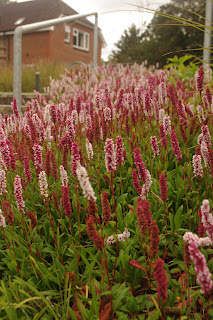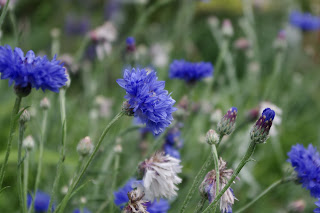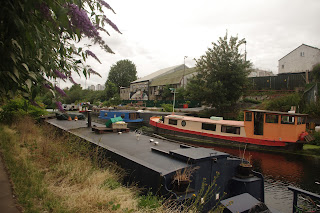I've noticed that various species and cultivars of the Persicaria genus have become popular in planting schemes. Some are quite tall and shrubby, others low growing and mat forming. This looks like Persicaria affiinis. Now that plants are being identified on the molecular level various members of the genus are being moved to the related genera Bistorta and Koeniga. The above becomes Bistorta affinis for example though it generally takes a while for new names to catch on in the trade.
Persicaria if I may still call them that have the virtue of being very hardy and flowering in late summer/early autumn when other plants have faded. Their popularity seems to have coincided with the trend for 'naturalistic' garden design. Actually this one is a long way from its natural habitat in the Himalayas so 'natural' is a relative concept.
It's used well here but when a species or cultivar is a good 'doer' they sometimes get overused on account of their reliability. Plants like Mahonia aquifolium and Bergenia cordifolia routinely feature as low maintenance ground cover in municipal settings across the land. It's hard to be thrilled until you see images of them in their native range. The former is a forest species of the Pacific North West of America, the latter a plant of high mountain meadows and woodland in Siberia, Mongolia and China. By the same measure Bistorta affinis must look rather different on a mountainside in the Himalayas.










































